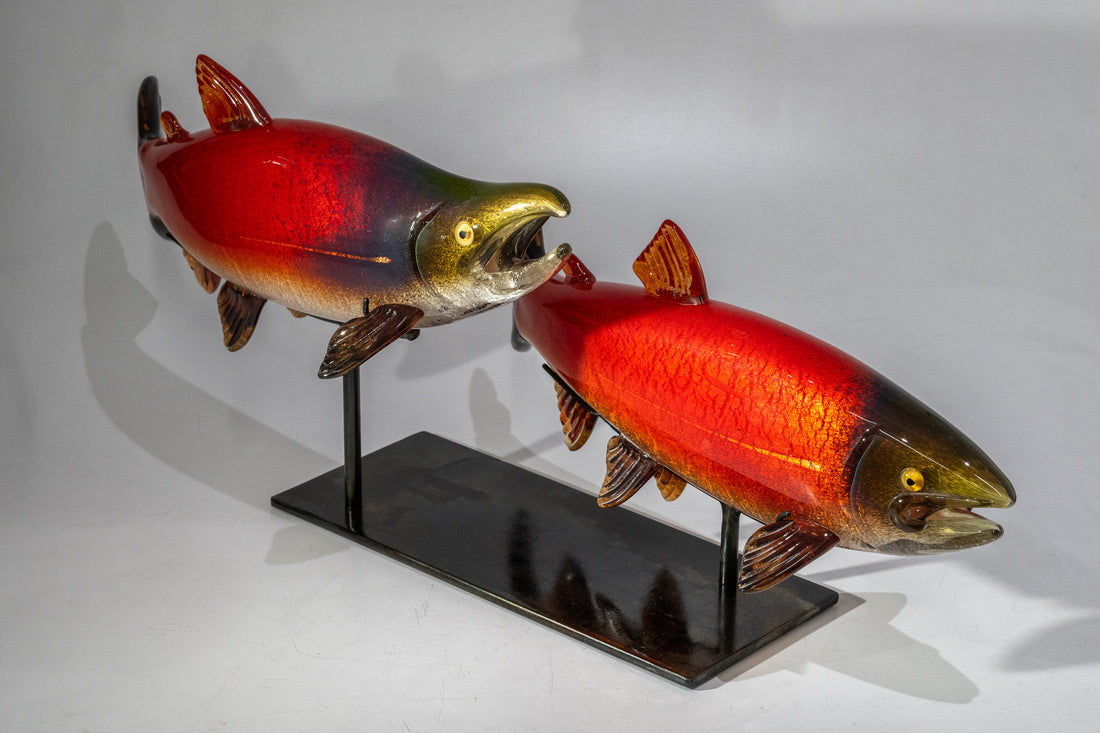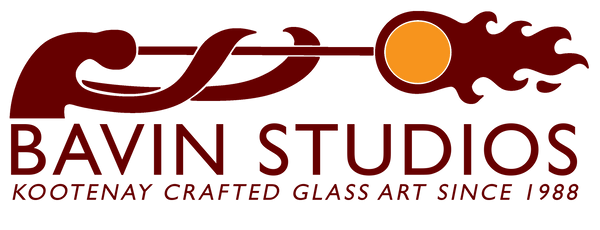
Bringing the Salmon Home
Share
We are excited to be supporting the indigenous led initiative "Bringing the Salmon Home". For the last half of 2024 we will donate $100 for every glass fish that we sell to the Bringing the Salmon Home initiative. This includes through our representing galleries; Artym Gallery, Invermere, BC, Canada House Gallery, Banff, AB, Duncan McClellan Gallery, St. Petersburg, FL, and of course the Bavin Studios gallery here in Invermere, BC.
Many people don't know that there was a large salmon run all the way to the headwaters of the Columbia River up until the 1930's. At this point, there became too many manmade dams on the river for the fish to make it all the way to the upper Columbia basin. This salmon run is not to be confused with the run of Kokanee that is typically seen every fall in the upper Columbia. While genetically identical to Sockeye salmon, Kokanee are land locked and no longer anadromous (ocean going) like Sockeye. This results in the smaller size of the Kokanee relative to Sockeye, as the Sockeye grow bigger during their time in the Pacific Ocean. The local Kokanee typically spend their time in Kinbasket Reservoir, made by the Mica dam, and then run up to tributaries of Lake Windermere and Columbia Lake in the fall months.

Kokanee by Ryan Bavin 2022
The main species of the salmon run on the Columbia were Sockeye and Chinook as well as Steelhead, an ocean migrating species of Rainbow Trout. Millions of pounds of fish would swim up the Columbia River every year to spawn. This was an immense food source for indigenous people as well as animals and plants. Since the salmon die after spawning, their decaying bodies would fertilize the trees and plant life along the river and its tributaries.
The Bavin family moved to the Invermere area in 1921 when the Salmon Run was still intact. Ryan remembers stories that his grandfather Hal would tell about the Salmon when they would return to Lake Windermere, as well as when they dwindled and eventually never returned. Before this time, the area we now know as Athalmer used to be known as the Salmon Beds.

The "Selkirk" paddlewheeler at the Salmon Beds, now Athalmer, BC, circa 1908.
Bringing the Salmon Home is working to restore the upper Columbia River salmon run and is led by multiple First Nations in an intergovernmental initiative.
More information about Bringing the Salmon home can be found at: https://columbiariversalmon.ca/
